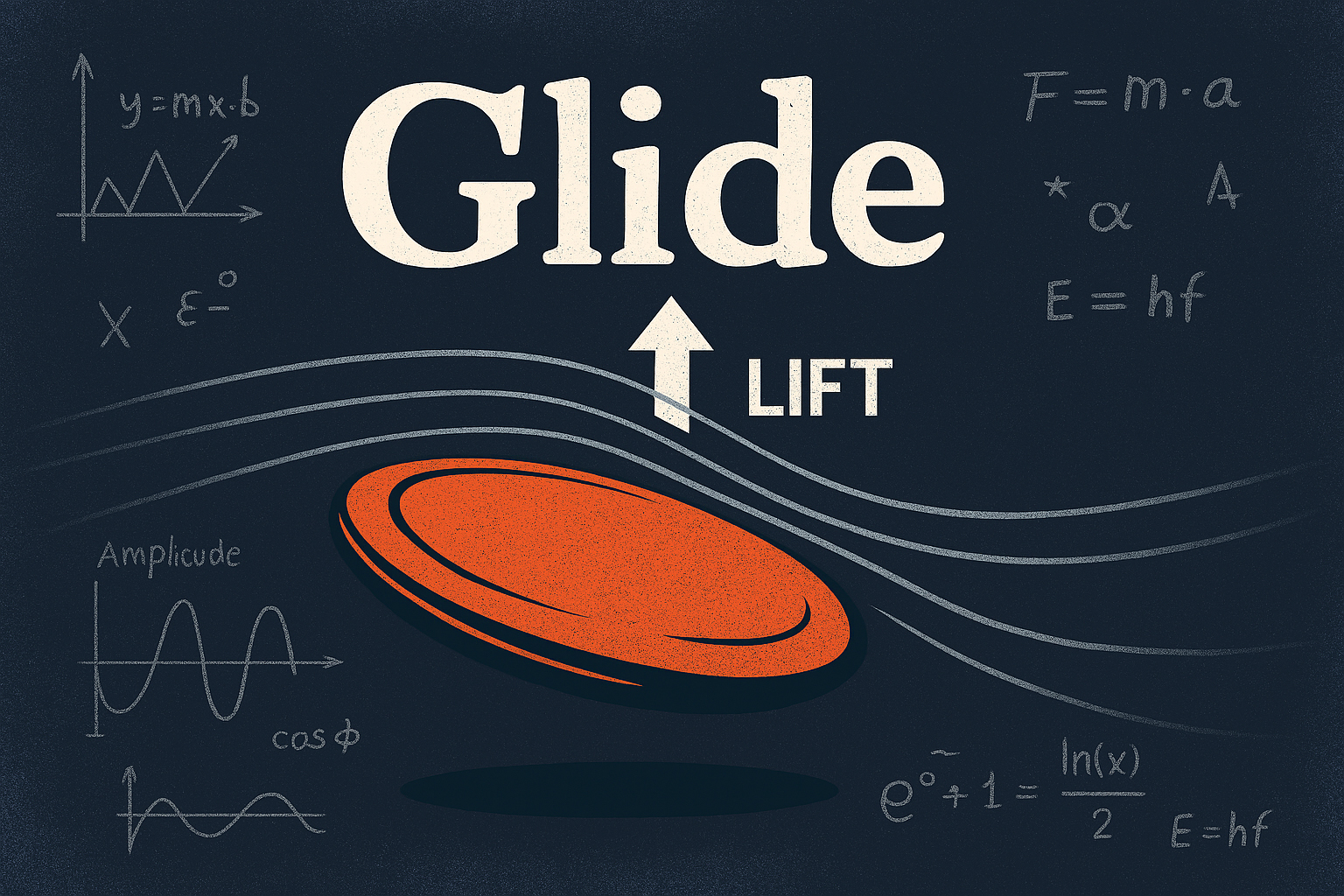News & Media
via Disc Golf Puttheads
Understanding Glide in Disc Golf: How Discs Stay in the Air

Disc Golf Puttheads 10:37:00 PM 11/03/2025
Understanding Glide in Disc Golf: How Discs Stay in the Air Glide in disc golf is the measure of how long a disc stays in the air and how far it travels without much effort. It’s not magic. It’s physics. Lift, drag, spin, and disc design all work together to keep a disc flying. Understanding glide helps you appreciate how discs fly and can guide you when buying new plastic. What Is Glide? Disc golf seems simple. You throw a disc, watch it fly, and hope it lands close to the basket. But there’s more going on than meets the eye. Glide is the quality that makes some discs float down the fairway while others drop quickly. It’s not just a number stamped on the disc. Glide comes from how the disc is shaped, how it moves through the air, and how you throw it. How Lift Keeps a Disc Flying Lift is the main force that keeps a disc in the air. It pushes upward against gravity and is created when air moves faster over the top of the disc than underneath. This difference in airspeed creates lower pressure on top and higher pressure below, which lifts the disc. The same principle helps airplanes fly. The shape of the disc matters too. Most discs have a beveled edge and a curved top that speed up airflow and generate lift. The angle of attack also matters. If the disc is tilted slightly nose down, it catches more lift. Too steep and you create drag instead. Speed and spin also affect lift. A faster throw generates more lift, and spin keeps the disc stable so it doesn’t wobble or stall early. Drag: The Slowing Force Drag is what slows the disc down. There are two types to consider. Form drag comes from the disc pushing through the air, while skin friction comes from air rubbing along the surface of the disc. Smooth, aerodynamic discs experience less drag. But drag isn’t all bad. It helps slow the disc for a soft landing and can actually support glide when balanced with lift. Spin and Stability Spin is what keeps the disc steady in flight. When you throw with spin, it creates gyroscopic stability, meaning the disc resists flipping or wobbling and stays on its intended path. More spin often means more glide because the disc stays stable longer. Understable discs tend to glide more since they resist fading early, while overstable discs trade glide for wind resistance and control. Disc Design and Glide Ratings Disc design has a major influence on glide. Manufacturers assign glide ratings, usually between 1 and 7, to show how long a disc can stay in the air. High-glide discs, like the Innova Mako3 or Latitude 64 River, often have dome-shaped tops and lighter weights. Low-glide discs are flatter, heavier, and more overstable, which makes them better for windy days or tight control shots. Don’t rely on numbers alone though. Two discs with the same glide rating can fly differently depending on the plastic type, wear, and your throwing style. How Air Conditions Affect Glide Glide isn’t just about the disc. The air itself plays a big role. Wind, temperature, and altitude all affect how a disc flies. A tailwind pushes the disc forward and adds glide, while a headwind increases drag and shortens flight. Higher elevations have thinner air, which reduces drag and lets discs glide farther. Warm, humid air is less dense, giving you a little extra lift. Understanding how conditions change flight helps you make smarter disc selections on the course. Your Throw and Technique Matter Even the best disc won’t glide if you throw it wrong. A clean release with snap adds spin and speed. Controlling the release angle, hyzer or anhyzer, affects how the disc rides the air. Higher throws with a forward trajectory tend to glide longer, especially with high-glide discs. Practicing your form and timing is the best way to unlock a disc’s full glide potential. Real-World Examples Picture a 300-foot tunnel shot with no elevation change. You could power up a fairway driver, but a high-glide midrange like the Discraft Buzzz or MVP Reactor might float straight down the fairway with less effort and more control. On a downhill bomber hole, glide really shines. A finesse throw with an Innova Leopard or Axiom Crave can stay in the air for what feels like forever. Glide vs. Distance There’s a common myth that glide equals distance. That’s not always true. Glide helps with distance, but speed and stability matter too. High-speed drivers with good glide can travel far, but only if you have the arm speed to power them. Glide is about maintaining forward momentum while losing altitude slowly, not floating like a beach frisbee. Understanding this helps you pick the right disc for your throwing power. Why Glide Matters Glide isn’t just physics. It’s strategy. Whether you’re carving tight lines through the woods or bombing open fairways, knowing how glide works helps you choose the right disc, adjust for conditions, and predict flight paths more accurately. Glide is what turns a decent throw into a great one. It’s the quiet force behind every soaring shot. Learn it, use it, and take advantage of that knowledge in your disc golf game. The post Understanding Glide in Disc Golf: How Discs Stay in the Air appeared first on Disc Golf Puttheads.
Article Comments
No posts found
Be the first! Login Required